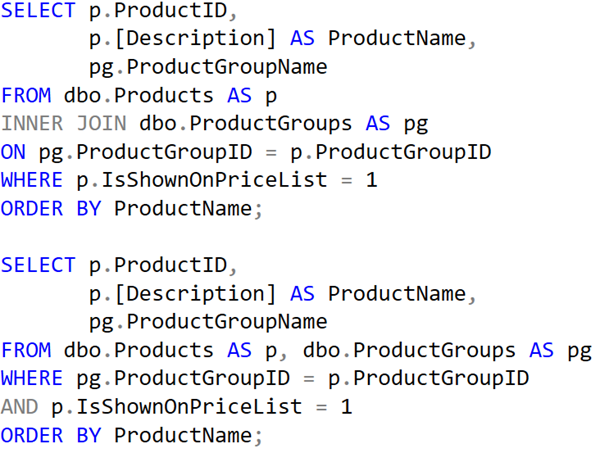T-SQL 101: 105 Using modern join syntax

There are two ways you can write common join syntax. There’s an older way to write the query and a new way to write the query.
In the image above, you can see the new way written first, and then the old way written below. The newer syntax was introduced as part of ANSI SQL, back in 1992. It has been recommended for over 30 years now.
Comparison
When you look at the older syntax, you’ll notice that I’m doing two things in the WHERE clause. I’m both determining how the tables are joined, and I’m also filtering the rows that I want.
The SQL committee looked at this and said, look, this isn’t very clear. They came up with the newer syntax shown at the top. In this newer syntax, we separate out how the tables are joined, from how any filtering is applied.
Note that a lot of people still write the older syntax but I’d strongly encourage you to write the newer syntax instead.
As a side note, it’s one of the things I don’t like about the graph query syntax in SQL Server. It’s much closer to the older syntax. Mind you, it’s not an issue as I can’t remember the last time I saw anyone even trying to use it. I don’t think it was a good addition to the product.
Learning T-SQL
It’s worth your while becoming proficient in SQL. If you’d like to learn a lot about T-SQL in a hurry, our Writing T-SQL Queries for SQL Server course is online, on-demand, and low cost.
2025-02-01

